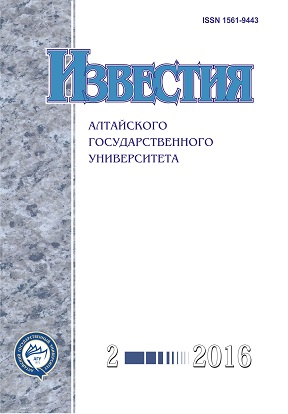The Stone Industries of the Final Middle Paleolithic in the Darvagchai Geoarchaeological Area
DOI:
https://doi.org/10.14258/izvasu(2016)2-38Keywords:
North-East Caucasus, Middle Paleolithic, Levallois knapping, NeopleistoceneAbstract
This article presents the research results of Final Middle Paleolithic complexes from Darvagchai geoarchaeological area. These materials significantly complement the factual evidence of the given cultural and chronological range at the territory of the North Eastern Caucasus. The stone tools are characterized by Levallois knapping technique and present a typical Middle Paleolithic tool kit. Middle-size artifacts predominate. The artifacts are made of homogenous raw materials and have the same degree of the surface safety and are made in the same technical tradition. Peculiarities of technological and typological character of lithic industry with pronounced Levallois features propose the specific character of Paleolithic in Seaside Dagestan. This study of Final Middle Paleolithic allows approaching to the solutions of the problems, associated with appearance and development of anthropologically modern human types. It gives an opportunity not only to reconstruct the cultural historical process in this territory during Neopleistocene, but also resolve the problems of content and boundary adjustment of cultural chronological divisions in Paleolithic of the Caucasus and the Aral-Caspian Basin in general.
DOI 10.14258/izvasu(2016)2-38
Downloads
References
Деревянко А.П., Амирханов Х.А., Зенин В.Н., Анойкин А.А., Рыбалко А.Г. Проблемы палеолита Дагестана. - Новосибирск, 2012.
2
Деревянко А.П., Зенин В.Н., Рыбалко А.Г., Анойкин А.А. Археологические материалы финала среднего палеолита стоянки Дарвагчай-Залив-1 (по материалам подъемных сборов в 2009 году) // Проблемы археологии, этнографии, антропологии Сибири и сопредельных территорий - Новосибирск, 2009. - Т. XV.
3
Рыбалко А.Г., Кандыба А.В. Исследование финала среднего палеолита стоянки Дарвагчай-залив-1 в 2012 году // Проблемы археологии, этнографии, антропологии Сибири и сопредельных территорий : Материалы Годовой сессии ИАЭТ СО РАН, 2012. - Новосибирск, 2012. - Т. ХVIII.
4
Кандыба А.В., Рыбалко А.Г. Новые данные о среднем палеолите Дагестана (по материалам памятника Дарвагчай-карьер-2) // Изв. Алт. гос. ун-та. - 2015. - № 4/1 (88). D0I:10.14258/izvasu(2015)4.1-21
5
Голубятников В.Д., 1937. Морские и речные террасы Дагестана // Ассоциация по изучению четвертичного периода Европы. - М., 1937. - Вып. III.
6
Анойкин А.А., Славинский В.С., Рудая Н.А., Рыбалко А.Г. Новые данные об индустриях рубежа среднего-верхнего палеолита на территории Дагестана // Археология, этнография и антропология Евразии. - 2013. - № 2.
Downloads
Issue
Section
License
Izvestiya of Altai State University is a golden publisher, as we allow self-archiving, but most importantly we are fully transparent about your rights.
Authors may present and discuss their findings ahead of publication: at biological or scientific conferences, on preprint servers, in public databases, and in blogs, wikis, tweets, and other informal communication channels.
Izvestiya of Altai State University allows authors to deposit manuscripts (currently under review or those for intended submission to Izvestiya of Altai State University) in non-commercial, pre-print servers such as ArXiv.
Authors who publish with this journal agree to the following terms:
- Authors retain copyright and grant the journal right of first publication with the work simultaneously licensed under a Creative Commons Attribution License (CC BY 4.0) that allows others to share the work with an acknowledgement of the work's authorship and initial publication in this journal.
- Authors are able to enter into separate, additional contractual arrangements for the non-exclusive distribution of the journal's published version of the work (e.g., post it to an institutional repository or publish it in a book), with an acknowledgement of its initial publication in this journal.
- Authors are permitted and encouraged to post their work online (e.g., in institutional repositories or on their website) prior to and during the submission process, as it can lead to productive exchanges, as well as earlier and greater citation of published work (See The Effect of Open Access).








